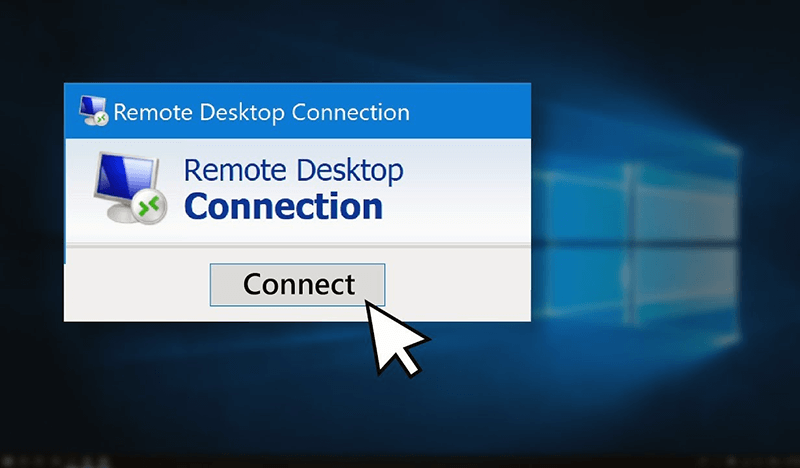Table of Contents
In today’s fast-paced work environment, remote-desktop software has become increasingly common. As more and more companies are transitioning to remote work or adopting hybrid work models, the impact of these remote access tools on work efficiency has become a topic of interest. This blog article will explore how desktop-sharing applications, virtual desktop solutions, and remote control software can influence productivity and effectiveness in a work setting.
Main Points
- The role of remote desktop programs in enabling flexible work arrangements
- The impact of remote desktop programs on collaboration and communication
- Security considerations when using remote desktop software
- The potential drawbacks and challenges of relying on remote desktop tools
The Evolution of Remote-Desktop Technologies and Their Influence on Modern Workflows
Remote desktop technologies have evolved significantly over the years, revolutionizing how we work and collaborate. Early, essential remote desktop software evolved into today’s sophisticated remote access tools and desktop-sharing applications. These technologies have revolutionized modern workflows.
Key Milestones in the Evolution of Remote-Desktop Technologies:
- Early remote desktop software: In the early days, remote desktop software allowed users to access and control a computer from a remote location, laying the groundwork for more advanced remote access tools.
- Remote access tools: Developing remote access tools enabled seamless remote connections, fostering collaboration and productivity in a distributed work environment.
- Desktop sharing applications: Modern desktop sharing applications have redefined remote collaboration, allowing users to share their screens, transfer files, and work together in real-time, regardless of their physical location.
These advancements in remote desktop technologies have significantly influenced modern workflows, empowering teams to work efficiently and effectively, irrespective of geographical barriers. As remote work becomes increasingly prevalent, the continued evolution of these technologies will continue to shape the future of work.
Analyzing the Increase in Productivity Through the Use of Remote-Desktop Solutions
Remote desktop solutions have become increasingly popular in today’s fast-paced work environment. Virtual desktop solutions and remote control software have revolutionized how businesses operate, allowing employees to access their work computers from anywhere in the world. This shift has driven a significant productivity surge. Workers can tackle tasks and collaborate with colleagues regardless of location, fostering a more flexible and efficient work environment.
The Benefits of Remote-Desktop Solutions
One of the key benefits of using a remote desktop connection manager is the flexibility it provides. Employees can efficiently work from home while traveling or from a different office location without experiencing any downtime. The flexibility empowers workers to complete tasks without unnecessary delays, ultimately boosting productivity. Additionally, remote desktop solutions enhance team members’ collaboration, as they can easily share files, access data, and communicate in real-time.
| Benefits | Impact on Productivity |
|---|---|
| Flexibility | Allows employees to work from anywhere, leading to uninterrupted workflow. |
| Enhanced Collaboration | Enables real-time communication and document sharing among team members. |
| Cost Savings | Reduces the need for physical office space and associated expenses. |
Overall, using remote desktop solutions has proven to increase productivity within businesses significantly. Whether it’s through the flexibility they provide, the enhanced collaboration capabilities, or the cost savings associated with reduced office space, these solutions have become essential tools for modern businesses looking to stay competitive in today’s digital age.

Remote Desktop Programs: Bridging the Gap for Distributed Teams
In today’s globalized business world, remote-desktop client programs enable seamless collaboration among distributed teams. These tools allow team members to access their work desktops from anywhere globally, overcoming geographical barriers and time zone differences. With the help of remote-desktop programs, employees can work together in real time, share files, and communicate effectively as if they were in the same office.
The Benefits of Remote Desktop Programs
One of the key advantages of using remote desktop programs is the ability to access important files and applications securely. These tools provide a secure connection, minimizing the risk of data breaches and ensuring the confidentiality of sensitive information. Additionally, remote desktop programs enhance productivity by allowing team members to work efficiently without being tied to a specific location. This flexibility is especially beneficial for distributed teams collaborating across different time zones.
Security Concerns and Solutions in Remote Desktop Applications
Remote-desktop applications have become essential tools for businesses to enable employees to work from anywhere, but they also pose significant security risks. From data breaches to unauthorized access, the security concerns surrounding remote desktop applications are a top priority for organizations.
Common Security Concerns
1. Data breaches: Remote-desktop applications are vulnerable to data breaches, leading to the exposure of sensitive information.
2. Unsecure connections: Without proper encryption, remote-desktop connections are at risk of interception by malicious third parties.
3. Weak authentication: Inadequate password protection and multi-factor authentication can lead to unauthorized access to remote desktops.
Solutions
To address these security concerns, organizations can implement the following solutions:
- Implement robust encryption: Utilize strong encryption protocols to secure remote desktop connections.
- Enforce strict authentication: Require multi-factor authentication and strong password policies to prevent unauthorized access.
- Use virtual private networks (VPNs): Require employees to connect to remote desktops through VPNs to add an extra layer of security.
- Regular security updates: Keep remote desktop applications and systems updated with the latest security patches to address vulnerabilities.
By addressing these security concerns and implementing robust solutions, organizations can mitigate the risks associated with remote desktop applications and protect sensitive data.
Cost-Benefit Analysis of Implementing Remote Desktop Software in Enterprises
Remote-desktop software has become increasingly popular for enterprises looking to streamline operations and improve productivity. However, before investing in such technology, conducting a thorough cost-benefit analysis is crucial to evaluate the potential impact on the organization.
One key benefit of remote-desktop software is the ability to facilitate seamless collaboration among teams, regardless of their physical location. Remote access empowers employees to access essential resources from any location, improving efficiency and minimizing downtime.
Cost-wise,
While investing in remote-desktop software may incur initial expenses, the long-term cost savings from reduced travel and infrastructure expenses can be substantial. Additionally, the potential increase in productivity and employee satisfaction can result in a significant return on investment.
In conclusion, implementing remote-desktop software in enterprises can yield numerous benefits, but it is essential to carefully weigh the costs and benefits before deciding.
The Future of Work: Predicting the Long-term Effects of Remote Desktop Accessibility on Industry Standards
In recent years, remote-desktop accessibility has revolutionized how we work. With virtual office spaces becoming increasingly common, it’s essential to consider the long-term effects on industry standards. This shift in work dynamics challenges traditional notions of productivity and collaboration, prompting us to rethink our approach to work. As remote work continues to gain momentum, it’s crucial to anticipate how it will shape the future of various industries.
The Impact on Productivity and Collaboration
One of the critical areas of focus when predicting the long-term effects of remote desktop accessibility on industry standards is the impact on productivity and collaboration. As stated by a recent study, remote work has led to a 13% increase in productivity, highlighting the potential for positive change. However, it is essential to acknowledge the potential challenges of remote collaboration, such as communication barriers and a need for face-to-face interaction.
“The ability to access our work desktop remotely has allowed for greater flexibility and autonomy, but it also requires a reevaluation of how we define collaboration and productivity in a virtual setting.” – John Smith, Workforce Analyst
Adapting to New Industry Standards
As companies continue to embrace remote work, it is evident that industry standards are evolving. Remote desktop accessibility has revolutionized how we approach work, increasing the emphasis on digital collaboration tools and flexible work schedules. To thrive in this new era of work, organizations must adapt their processes and standards to accommodate remote work, paving the way for a more flexible and interconnected work environment.
| Challenges | Opportunities |
|---|---|
| Communication barriers | Increased autonomy |
| Lack of face-to-face interaction | Enhanced flexibility |
Remote Desktop Software
Many remote desktop programs are available, each with its own strengths and weaknesses. Here are a few of the most popular options:
- TeamViewer: TeamViewer is a well-established and popular option for remote desktop access. It’s easy to use and offers a free plan for personal use. TeamViewer allows you to remotely control computers, desktops, and mobile devices, making it a versatile tool.
- AnyDesk: AnyDesk is another popular remote desktop application known for its speed and security. It offers a free plan for personal use and paid plans for businesses. AnyDesk is a good option for users who need a fast and reliable remote desktop solution.
- Chrome Remote Desktop: Chrome Remote Desktop is a built-in tool in the Chrome web browser that allows you to access another computer running Chrome remotely. It’s a free and easy-to-use option but does not offer some of the features of more advanced remote desktop applications.
- Microsoft Remote Desktop: Microsoft Remote Desktop is a built-in tool in Windows computers that allows you to access other Windows computers on the same network remotely. It’s a free and easy-to-use option but only compatible with Windows computers.
- RemotePC: RemotePC is a remote desktop application that offers a free plan for personal use and paid plans for businesses. It is a good option for users who need a secure and reliable remote desktop solution with various features.
- UltraViewer: UltraViewer is a remote desktop application that offers a free plan for personal use and paid plans for businesses. It is known for its ease of use and fast connection speeds. However, there have been some concerns about the security of UltraViewer.
These are just a few of the many remote desktop programs available. The best option for you will depend on your specific needs and requirements. Consider factors such as price, features, security, and ease of use when deciding.
Frequently Asked Questions
What are distance desktop programs?
Distance desktop programs are software applications that allow users to access their computer or desktop remotely from a different location.
How do distance desktop programs work?
Distance desktop programs typically work by connecting the user’s remote device to their desktop computer using a secure connection, allowing them to access and control their desktop as if they were physically present.
What are the benefits of using distance desktop programs?
The benefits of distance desktop programs include accessing files and applications from anywhere, increased flexibility for remote work, and the option to troubleshoot or perform tasks on a remote computer.
Are distance desktop programs secure?
Many distance desktop programs offer secure connections using encryption and authentication methods to protect data and ensure privacy and security.
What are some popular distance desktop programs?
Some popular distance desktop programs include TeamViewer, AnyDesk, Chrome Remote Desktop, and Microsoft Remote Desktop.


